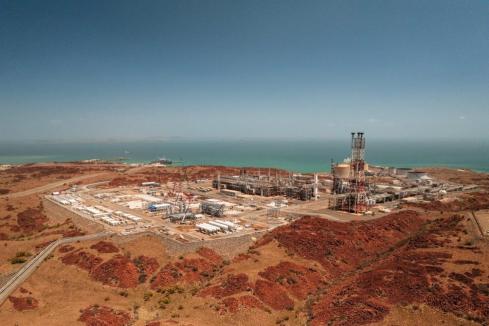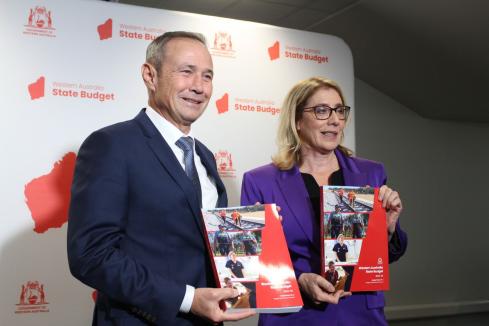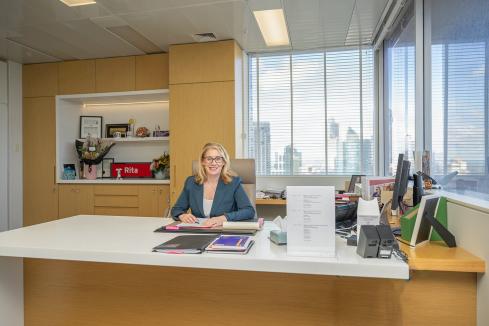We live in strange times when a state treasury is more bullish about commodity prices than an investment bank.


We live in strange times when a state treasury is more bullish about commodity prices than an investment bank.
Who do you think would win a commodity price tipping competition between a civil servant working for the Department of Treasury in Western Australia and a research analyst working for the world’s top investment bank, Goldman Sachs?
In tough times, such as now, many people would back the government worker because he or she would probably be viewed as being naturally more conservative and opting for low future prices – if only to be sure of avoiding a nasty surprise.
Investment bank analysts are generally seen as being more aggressive and take a more optimistic view, if only to encourage investors to place a buy order with the bank’s broking division.
What a surprise, then, to discover that these days it is the government going for the big numbers and the bank being prudent.
For WA, this tipping contest is more than hypothetical, and there’s more riding on it than bragging rights over a few beers on Friday night; because if the government forecast is wrong, then the state budget brought down last week has already been holed below the waterline.
In what looks like a rerun of the horrendous mistake made by federal government officials a few years ago when they were designing the super-tax on iron ore and coal, the WA government has assumed an average iron ore price for the current financial year of $US116.70 a tonne.
Treasury needs to estimate the iron ore price so it can calculate what the state is likely to receive in royalty payments.
But, just as the federal government discovered in the mining tax fiasco, tipping future commodity prices is a risky game to play and not one well suited to civil servants with minimal understanding of how markets work.
Governments, after all, have limited capacity to adjust if they get a price tip wrong because their budgets cannot be turned on and off at will without causing political pain.
Investment banks, on the other hand, make their living by best guessing price movements, and have the systems in place to move quickly if they get it wrong.
That’s why the WA government’s assumption of an iron ore price at $US116.70/t sits oddly against Goldman Sachs’ forecast for the 12 months ahead of $US108/t, and extremely oddly against the investment bank’s price tip for the following 12 months of $US80/t.
It is possible that Goldman Sachs is wrong and the iron ore price will stay ‘stronger for longer’. (Remember that comment in the earlier years of the commodity super-cycle, which turned out to not be so super after all?)
The latest Chinese trade data appear to indicate an improvement in that country’s economy, which might also be a pointer to higher levels of commodity demand of the sort exported by WA.
But even with strong Chinese demand there’s no guarantee the iron ore price will stay above $US100/t, thanks to another force at work in the equation – supply.
What’s happening in the commodity world is that a stampede of new projects launched during the boom years is coming on stream, leading to what might be called a ‘billion dollar game of chicken’ as producers dare each other to push ahead with expansion projects despite evidence of significant oversupply.
Winners in this game will be the low-cost producers, and in WA that means BHP Billiton and Rio Tinto, which can produce a tonne of iron ore over the long term for between $US37/t in the case of Rio Tinto and $US45/t in the case of BHP Billiton.
Other producers have long-term all-in costs such, as $US50/t in the case of Fortescue Metals Group, $US57/t for Atlas, and $US68/t for Mt Gibson.
If Goldman Sachs’ forecast of $US80/t for iron ore in 2015 is correct then profits will be squeezed, but no mines will close, a comment on WA being the global low-cost source of iron ore.
The local miners will also be aided by an expected fall in the exchange rate, though that introduces a second tipping game that’s best left to experts and fearless speculators.
And that’s the point, because price tipping of any sort is not a comfortable place for government, especially at a time of considerable economic uncertainty.
However that’s just what the state government has done in basing a large portion of its budget on an assumption that iron ore prices, and therefore iron ore royalties, will stay high.
Just as the federal government got it wrong with the mining tax, there is a chance the WA government is getting it wrong with its price prediction.
Bubble building
TWO weeks ago I asked the $64,000 property question: if the mining boom is over, why do Perth property prices keep rising?
The answer was easy: because rising prices are a direct function of cheaper money and as interest rates fall, buyers are able to borrow more.
Since then, official interest rates have nudged down by another 0.25 per cent, unleashing a sales blitz by the major banks as they compete for mortgage-lending business – a direct function of business lending drying up.
Westpac has led the charge with an oversized 0.28 per cent reduction to its variable rate, hoping to steal business from its rivals, which have only passed on the 0.25 per cent cut.
Consumers love lending wars because it makes them feel they’re able to borrow more and therefore buy a bigger and better home.
There is a problem, however, and anyone over the age of 20 knows exactly what that problem is. Lending wars end, interest rates rise, people who borrowed to their limit are exposed and a bank-created property bubble explodes in everyone’s faces.
It is possible that this time it will be different, but if you believe that then you also believe in flying pink elephants.
Almost unbelievably the property balloon is inflating again – just don’t be there when it pops.
Power pollution
Households in WA with solar panels are not alone in feeling angry with government for cutting the amount they get paid for selling power back to the grid.
In Germany there is a more spectacular mutiny brewing over alternative power schemes as people discover some of their favourite holiday locations in forests, on beaches and even in the mountains are being covered by a blizzard of 60,000 wind turbines.
The turbines do generate ‘green’ electricity, but it is not cheaper, nor is it less polluting in a visual sense.













